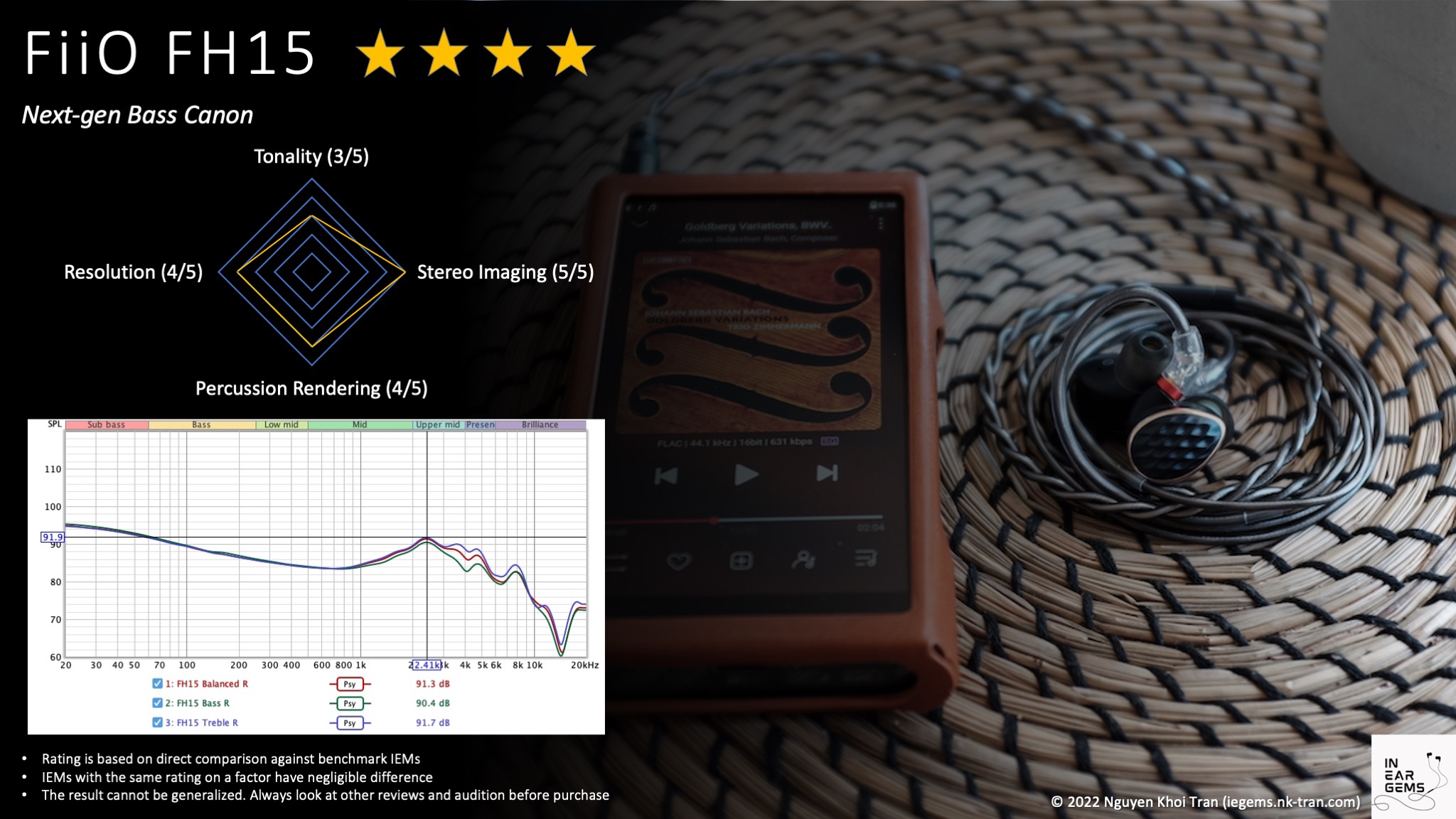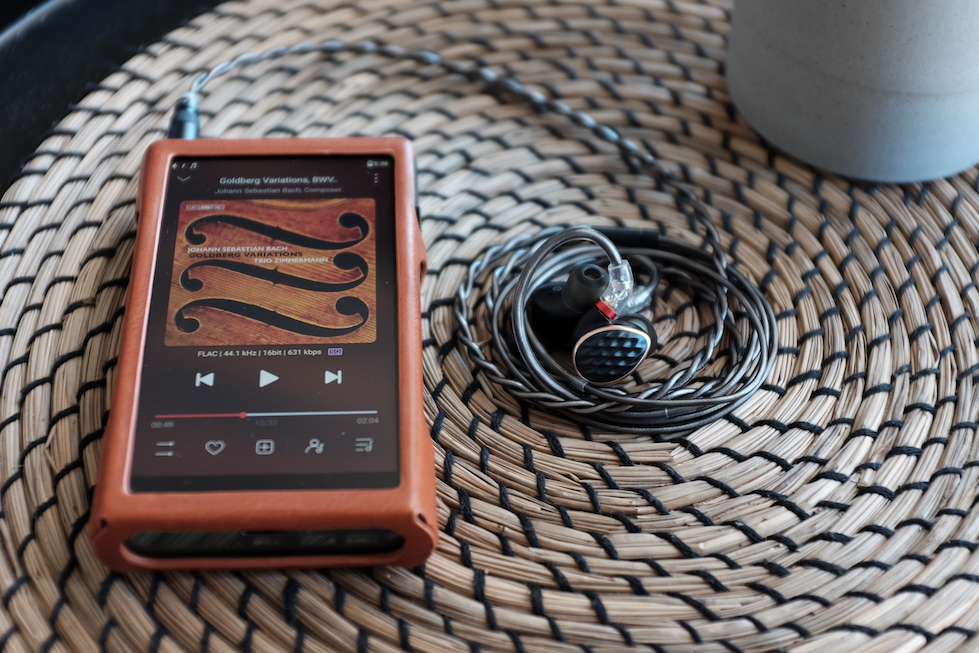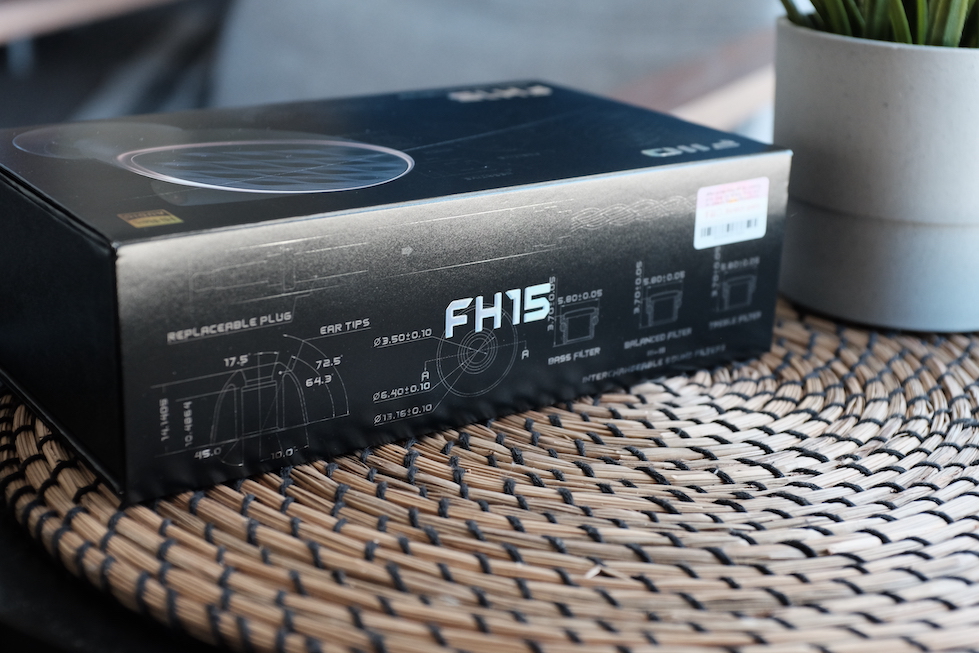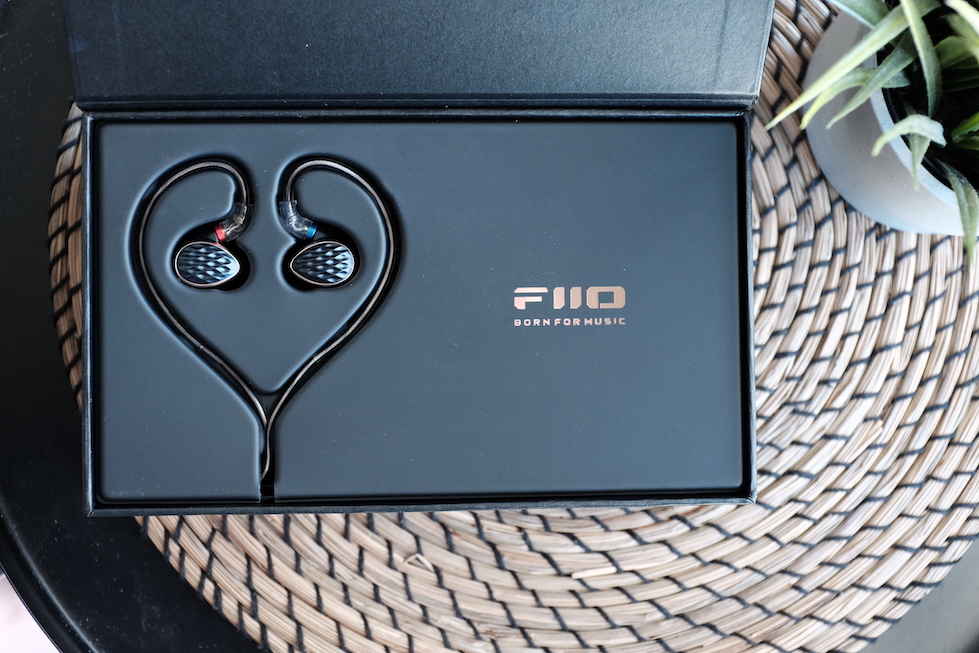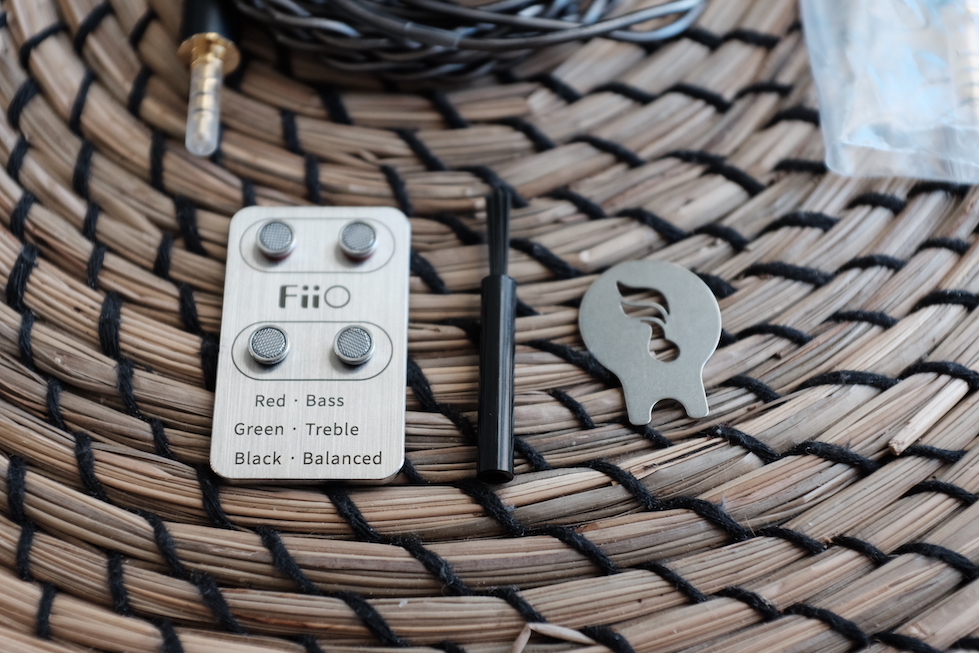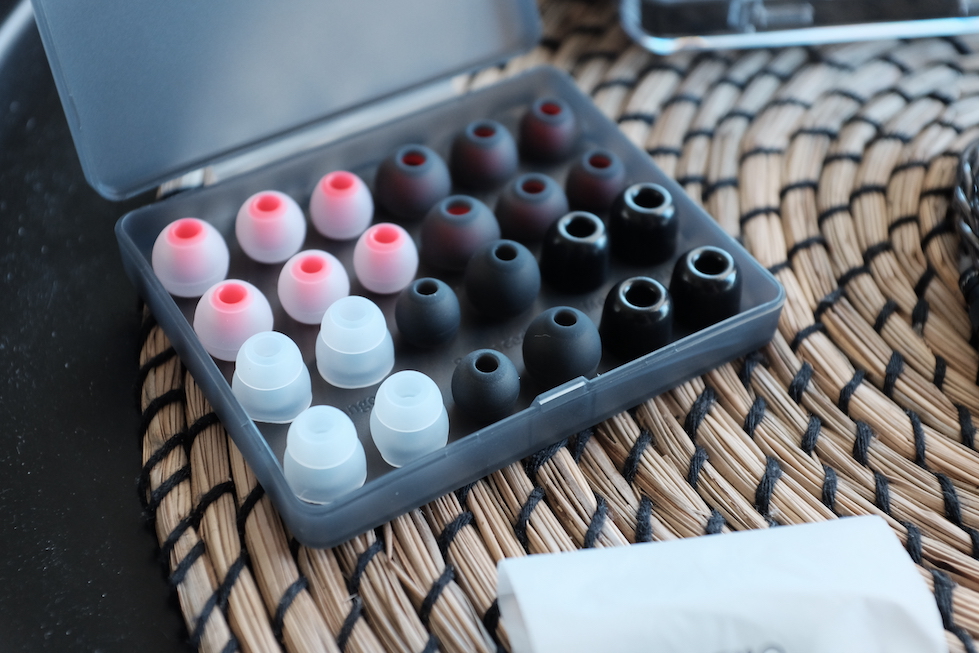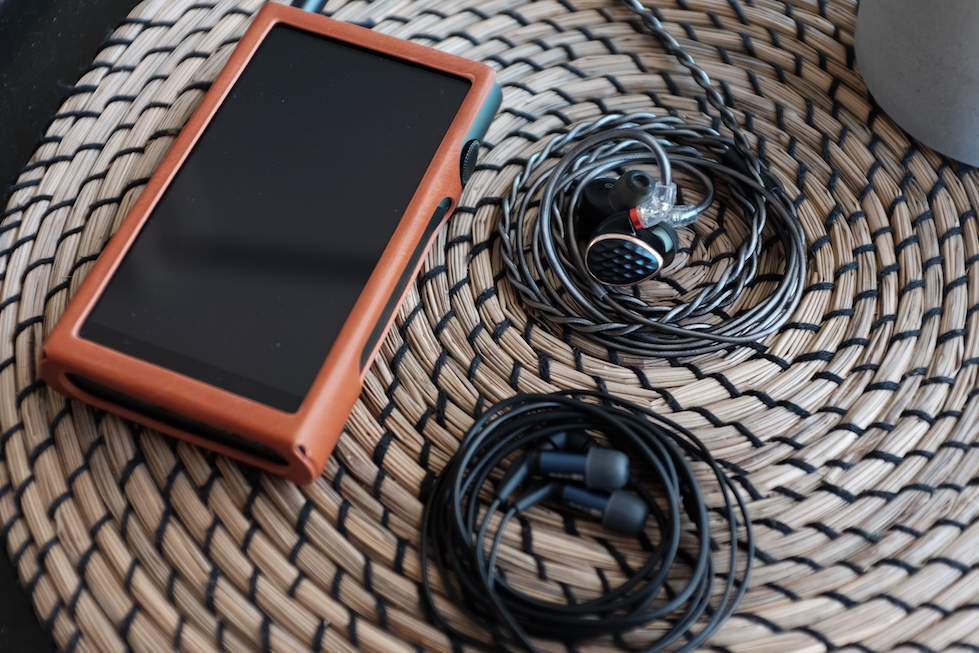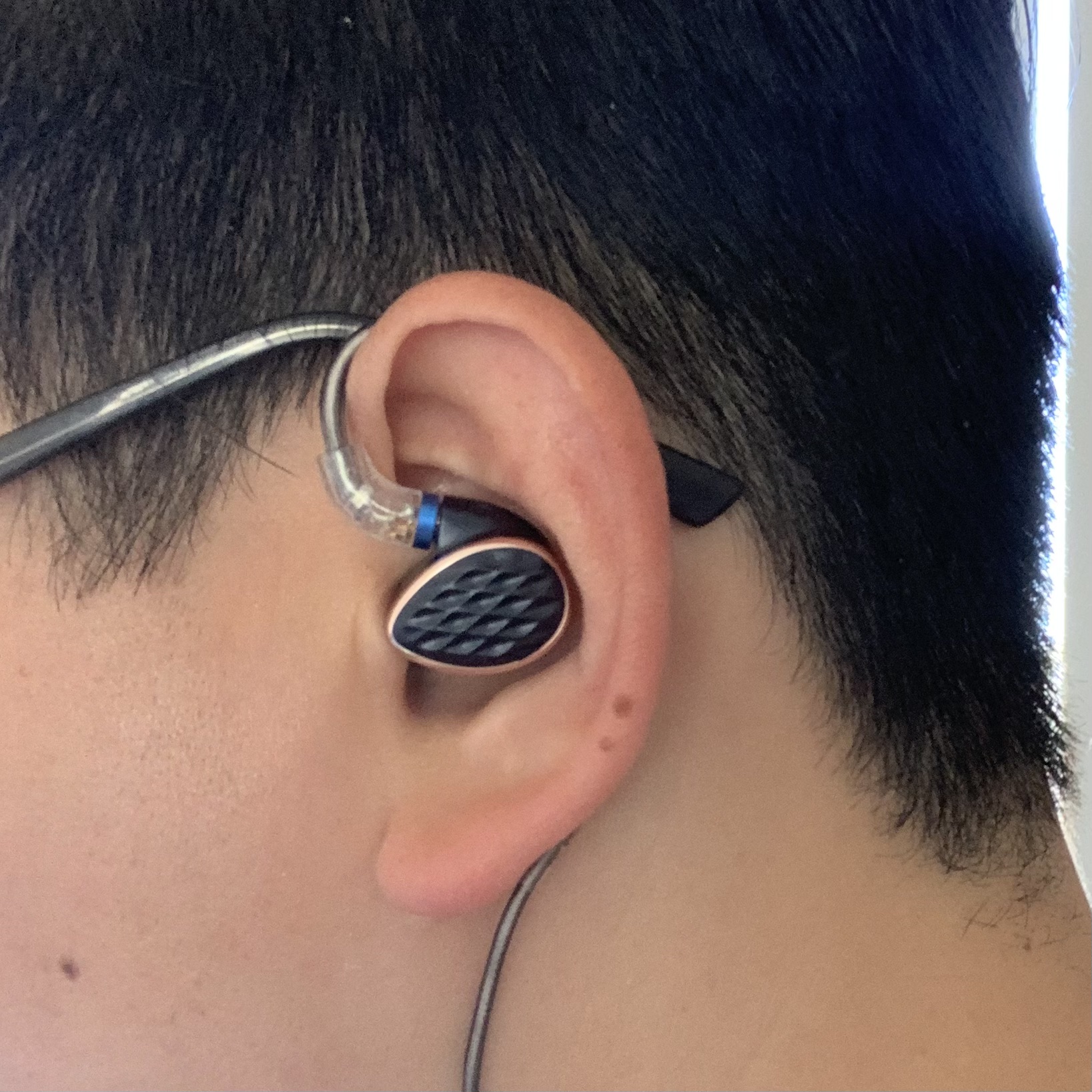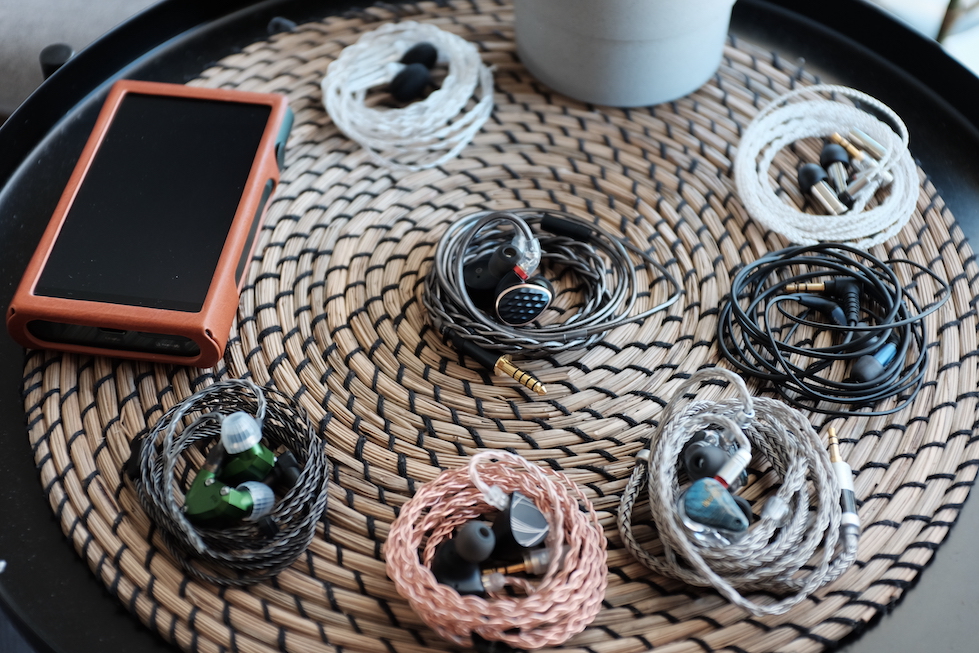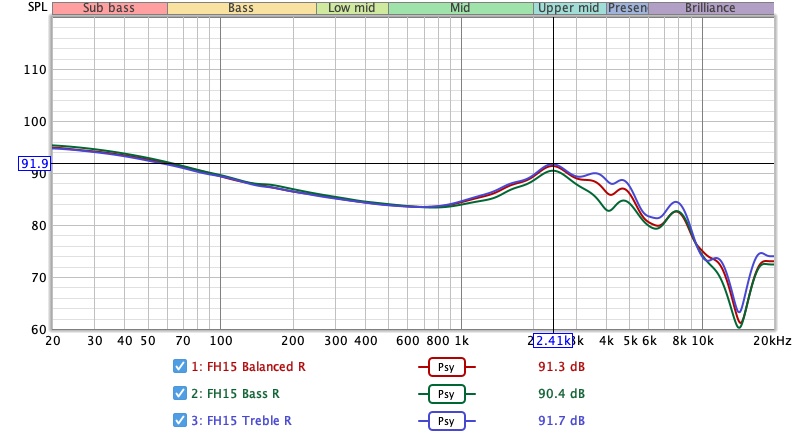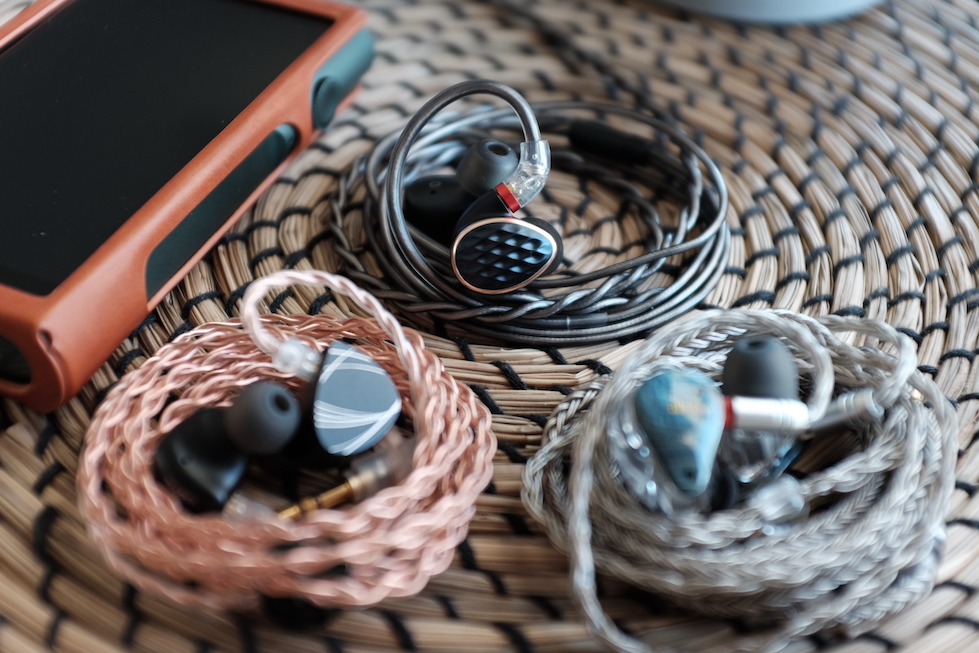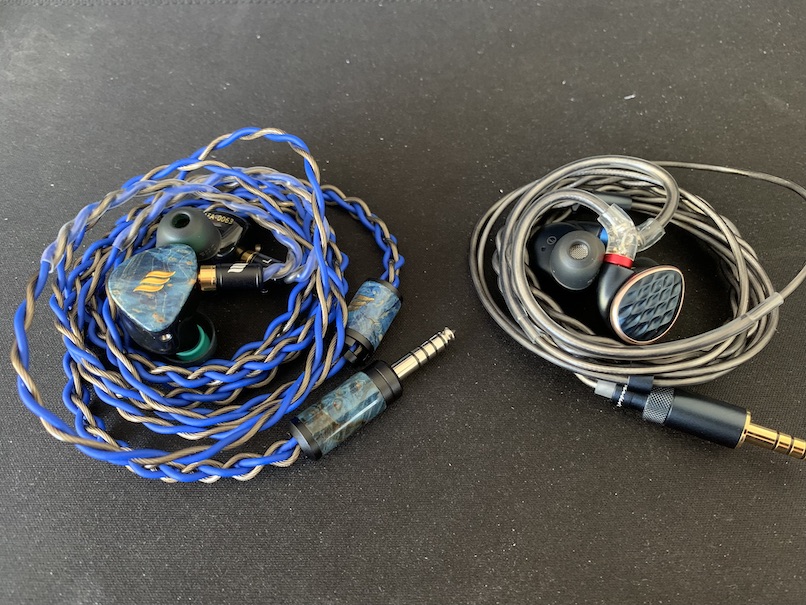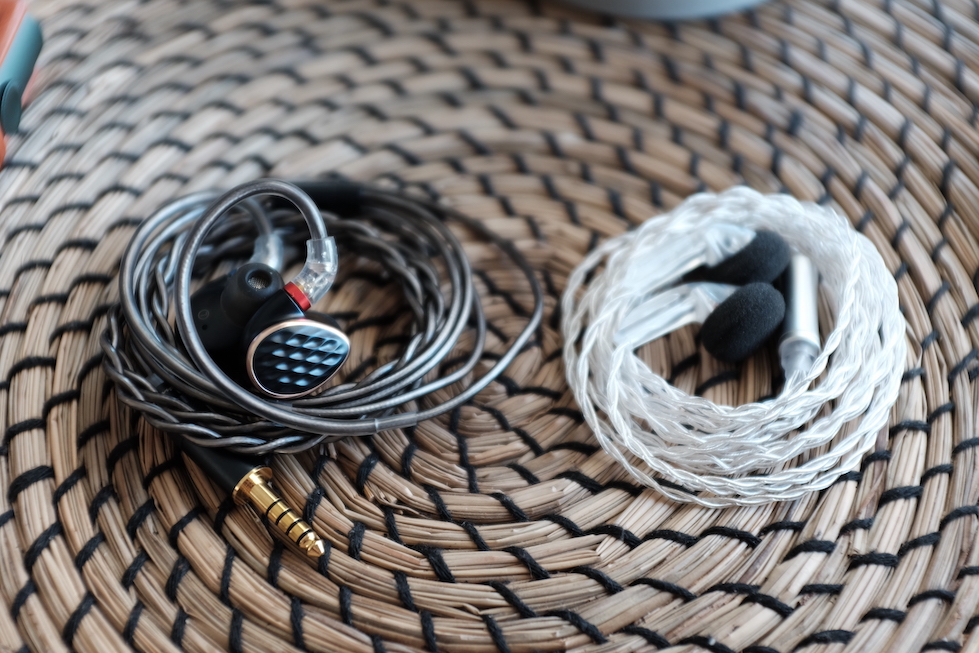FiiO FH15 - Next Gen Bass Cannon
If Forrest Gump were a fan of In-ear Monitors (IEM), he would say, “Life is like an IEM from the FH line of FiiO. You never know what you’re going to get.”
Whilst the FD line (FiiO’s Dynamic Driver IEMs) is predictable with a Harman-inspired tuning, and a varying degree of a treble peak at 5kHz, the FH line (FiiO’s Hybrid IEMs) is pretty much a wildcard. There seems to be no pre-defined target for this line, and thanks to the flexibility of a hybrid multi-driver configuration, FH IEMs can be anything. Sometimes they surprise you in a good way (FH9), sometimes they are honky (FH3), and sometimes they are just downright … strange (FH5s).
What can you expect from the latest addition to the FH line, the FH15? Let’s find out.
Forewords
- This unit is a review sample from FiiO (thank you!) FH15 retails for USD $230. You can find them at your local distributor or official FiiO store on Aliexpress.
- You should treat this review as the subjective impressions of an audio geek rather than an “objective truth” about the IEM. Your experience with any IEM would change depending on your DAC/AMP, music library, ear tips, and listening volume.
- I rate IEMs by A/B testing them against a few benchmark IEMs, regardless of price point. This approach ensures the consistency of the ratings in my ranking list. It means that if two IEMs score the same, they perform more or less similar.
- I believe that great IEMs are the ones that can achieve multiple difficult things simultaneously: (1) high resolution (meaning lines of music are crisp, clear, easy to follow and full of texture), (2) 3D soundstage with a strong sense of depth, (3) bold and natural bass with a physical rumble, (4) natural timbre, (5) relaxing and comfortable tonality.
- Ranking list and measurement database are on my IEM review blog.
Specs
- Driver: 3BA (Knowles ED for Mid, Knowles RAD for Treble) + 1 DD (10mm carbon-based diaphragm)
- Connector Type: MMCX
- Impedance: 16ohm@1kHz
- Sensitivity: 112dB/mW@1kHz
- Gimmick: Interchangeable nozzles for changing tonality
Non-sound Aspects
Ok, first thing first. FH15 is not the new flagship of Fiio’s FH line (that position is still FH9). It is the continuation of the FH5 line and the direct update of the FH5s model. Let me explain the organised chaos of FiiO’s product line:
- “FH” indicates FiiO’s Hybrid IEMs, meaning IEMs with a combination of balanced armature (BA) drivers and dynamic drivers (DD). If you are unfamiliar with “drivers”, they are simply speakers. BA are the tiny ones used in hearing aid devices. DD is the mini version of the loudspeakers.
- “1” indicates the first generation that uses the new naming scheme (meaning the previous FH5 and FH5s should be labelled as FH05 and FH05s if we want 100% consistency)
- “5” indicates that the current product is in the middle of the FH line. For your information, “1” and “3” are for the lower end, the “7” label is for the upper end, and “9” is for the top of the line.
(How do I know all of these? Because I have no life, of course)
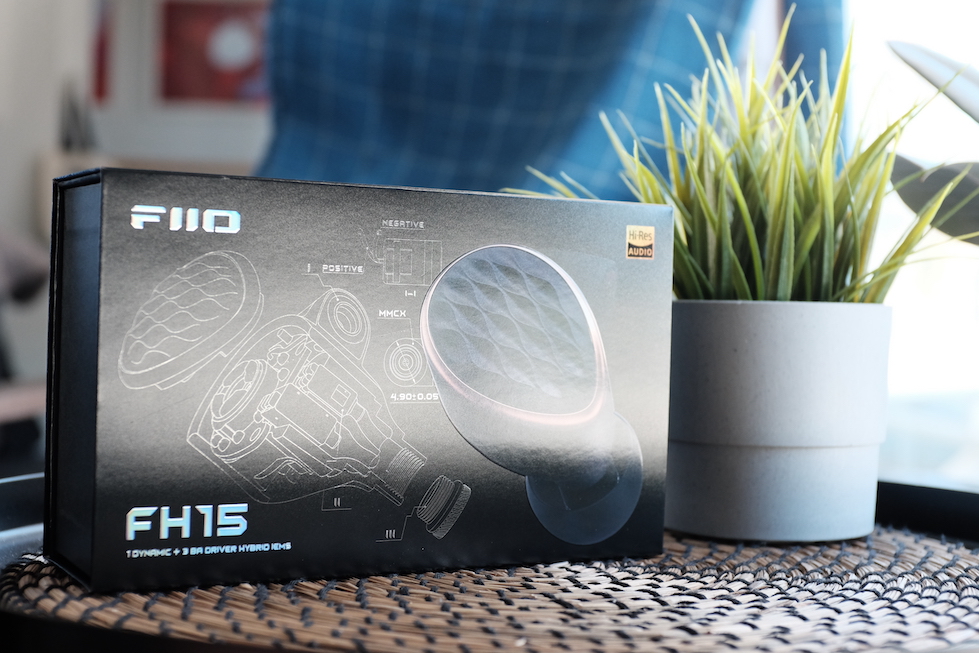
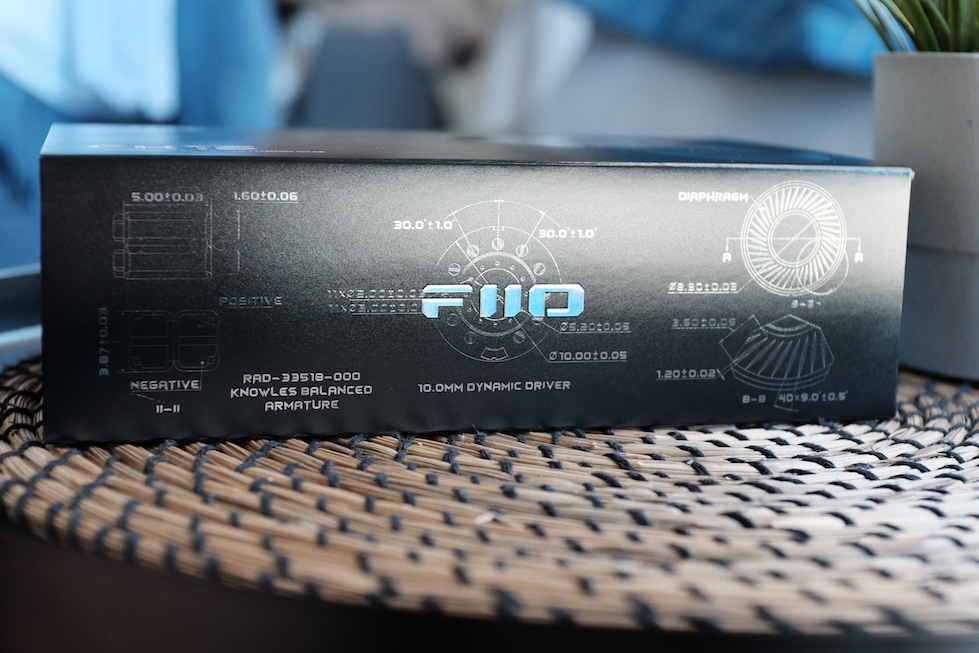
As usual, FH15 comes in a thick cardboard box decorated with schematic diagrams and holographic logos. No anime waifu (yet).

Inside the box, you are welcomed with the usual two-layer presentation. The IEM sits on the top layer. The bottom layer is reserved for accessories.
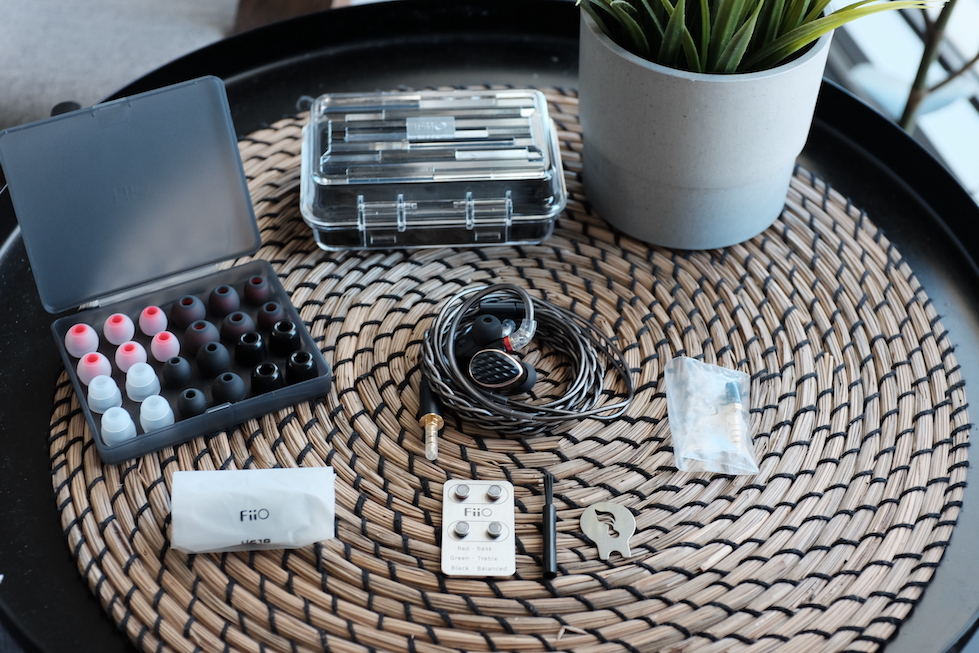
As usual, accessories are both generous and practical. You have a box of ear tips plus a complete set of the new HS18 tips, which I adore. You are also provided with a cleaning brush, a new and more practical MMCX tool for disconnecting the cable, and additional nozzles for adjusting the tuning of FH15.
The cable is a departure from the usual 8-strand cable. At first, I was disappointed, from an aesthetic point of view, that it has only 2 strands. However, it works great in practice, so I no longer mind it. The cable is terminated with an upgraded interchangeable plug that debuts with FF5. The new interchangeable plug system looks the same as the old one. Still, replacing the plugs is easier than the previous version.
The ear tips collection of FH15 is extensive. You should try all of them and see which one works best for you since they all sound different. I choose HS18 tips, as they are the most comfortable, and they tighten up the bass response of FH15, making the sound generally nicer.
Let’s talk about the earpieces themselves. They have an old-school shape that is quite rare nowadays. Think of the famous Shure SE215 and Westone universal IEMs with modern nozzles rather than thin and long tubes.
The earpieces themselves are small but relatively thick. They have gold trims similar to the OG FH5. The car-like patterns on the faceplates of the FH5 have been replaced by a “dragon scales” design. I’m unsure about “dragon scales”, but the FH15 faceplates remind me of dragon eggs in Harry Potter or Game of Thrones. I was also a bit worried that the semi-open design of FH5s was gone. Luckily, the soundstage of FH15 is still formidable.
Before we move on, let’s quickly touch on the fit. The earpieces themselves are comfortable. You are unlikely to have comfort issues unless you try to deep-fit these, like wearing a pair of Shure or Westone. Interestingly, it is very tempting to deep fit, given how close to the conchas the earpiece can sit.
How it sounds
Sources for listening tests:
- Fiio K7 (for all A/B tests)
- Shanling M6 Ultra
- Hidizs S9 Pro
Local FLAC files ripped from CDs or bought from Qobuz were used for most casual listening and A/B tests. My playlist for A/B tests can be found on Apple Music here.
Tonality and Timbre: 3/5 - Average
Frequency response of FH15. Measurements were done with an IEC-711-compliant coupler and might only be compared with other measurements from this same coupler. Visit my graph database for more comparisons.
FH15 is a bass-focused IEM. But FiiO has executed this “fun” tonality with finesse and restraint. As a result, you can have an above-average amount of bass without sacrificing the naturalness of voices and instruments. At the same time, FH15 is never harsh or sibilance because FiiO controlled the bass boost well and thus did not need to increase the treble to compensate. The result is a thumpy sound signature with an open, natural-sounding midrange and gentle treble. It’s hard to hate the signature, but there are points to improve.
Let’s talk about the positive aspects.
Firstly, the ear-gain region is finally done correctly. Gone is the unfortunate “hump” at 1.5kHz from FH3 and FH5s that makes vocals and instruments honky, nasally. FH15 opts for a smooth, gentle raise from 1kHz, peaking at around 2.5kHz. The ear gain is only about 8dB rather than the usual 10-12dB used by Moondrop and Harman-targeted IEMs. It means that vocals and instruments are still loud and clear, but they do not get too loud to the point of “shouting” to your face. If you find modern IEMs too shouty, you might like FH15’s tuning.
Secondly, the infamous 5kHz peak that forms the “cat ear” tuning of FiiO does not exist on FH15. As a result, the attack side of musical notes, such as the pluck of a guitar string, does not feel too edgy and piercing. The subdued 6kHz region further smoothens the treble response of FH15, removing most sibilance and harshness. Of course, this tuning choice is a double-edged sword. I’ll discuss its negative aspects later.
Finally, the bass shelf is big and bold yet natural. FH15 has a sub-bass-focused shelf. It means that the bass goes up and up until 20Hz rather than peaking at 150Hz (mid-bass) and rolls off. When the bass drops, the sub-bass energy helps FH15 create a physical rumble in your throat and chest. For instance, when I listen to Skyrim’s main theme Dragonborn, I can feel the rumble with every beat of the war drums. The “boom boom” sound is not neglected either, unlike some other sub-bass-focused IEMs like Monarch II. With FH15, you hear the boom, and you feel it.
Let’s talk about some negative aspects.
Firstly, the treble. Yes, FH15 plays a bit too safe. Whilst the lower and mid-treble, up to around 8kHz, is subdued but still alright, I don’t quite appreciate the steep rolls off after 8kHz. One of the issues is that this tuning robs FH15 of some micro-details, particularly reverbs and decays, the sense of sound bouncing around the recording venue. This issue impacts older classical recordings the most because it hides a layer of information (and enjoyment) from the listener.
Secondly, FH15 tilt too far in the warmth and dark tuning. Whilst the graph shows a relatively clean bass shelf, in practice, the bass of FH15 “bleeds” into the midrange more than expected. Let me elaborate with an example: the One Winged Angel Theme performed by Game Music Collective. FH15 renders the “boom boom” of the double bass quite loud. Moreover, the “boom” hangs around in the music too long, giving the whole orchestra a sense of “stuffiness”. When I swapped to the Aria (already a warm IEM), I breathed out with relief as if the windows of a closed and stuffy room had been opened.
Thirdly, the timbre of the instruments and vocals of FH15 is somewhat off. The problem is not too apparent with thumping commercial music or large orchestral pieces. The timbre problem appears with sparse music, such as the Chaconne in Bach’s Violin Partita No. 2 performed by James Ehnes, where there is nothing more besides the main instrument and the reverb of the room.
Simply put, the violin sounds boxy, as if it has too much “boom” in the lower end and high notes are muffled rather than being freely projected to the room. The sense of micro-dynamic, the subtle variation in volume, is also unimpressive. I can’t say whether these issues are due to the subdued treble or the “BA timbre”, but I don’t want to listen to Bach’s sonatas and partitas with FH15.
Conclusion: 3/5 - Average/Acceptable. FH15 is not fatiguing and sounds relatively correct most of the time. If you don’t listen to much acoustic music, you might not find any alarming problems with FH15.
Tuning filters
FH15 is packed with 3 tuning filters that you can screw onto the nozzles to modify the treble response. The treble nozzles, which FH15 uses by default, contain only a metal mesh to protect the internals from dust and debris. The balanced nozzles have acoustic filters to tame the treble. The bass nozzles include thicker filters to further reduce the treble.
Do they work? Yes, definitely. And if you combine them with the provided ear tips, you can have many different tunings.
However, I would argue that only one combination works if you want the most clarity, soundstage, and details from FH15: treble filter with HS18 ear tips. The balanced and bass filters tilt the tonal balance too far toward a warm and dark signature. Music notes become too thick. Details start to be masked. The soundstage shrinks and becomes congested.
Resolution, Detail, Separation: 4/5 - Good

Resolution is a fascinating subject due to the difficulty of pinning what it really is. To me, “resolution” can be separated into “macro” and “micro” levels. The “macro resolution” is synonymous with instrument separation. In general, if note attacks are very crisp and precise, musical instruments in a song would be distinctive even when they overlap on the soundstage. The “micro resolution” dictates how many details you can hear at the note tails. Many IEMs are good at macro- but mediocre at micro-resolution. A few are vice versa.
The macro-resolution of FH15 falls squarely at, or even slightly above, the “good” level, represented by the venerable Blessing 2.
Let’s take the One Winged Angel Theme performed by Game Music Collective as an example for analysing. At a glance, FH15 seems to be at Aria level (3/5 - Average) rather than Blessing 2. This impression is due to the boominess of the double bass and timpani drums. However, back-to-back A/B tests made it clear that FH15 renders instruments with more clarity and more separation than Aria, even when FH15 was held back by the boominess.
Similar observations can be made when comparing FH15 and Blessing 2. At a glance, Blessing 2 feels clearer. In A/B tests, they are on the same level regarding how they highlight and separate overlapping instruments in complex musical phrases. Again, FH15 does so whilst being handicapped by the boomy bass.
The micro-resolution of FH15 is slightly below the “good” level held by Blessing 2.
Let’s take the beautiful Rasputin cover by AURORA as an example. Blessing 2 highlights AURORA’s vocal in the mix and brings all the nuances, the “breaths”, to the surface. On the other hand, FH15 adds a slight warmth to AURORA’s voice, pushes her back to the mix, and lays a “veil” over the fine details. Don’t get me wrong, the details are there, but you need to look for it harder than with Blessing 2. However, FH15 is better than Blessing 2 at separation, allowing me to follow individual instruments and the backup vocals easier.
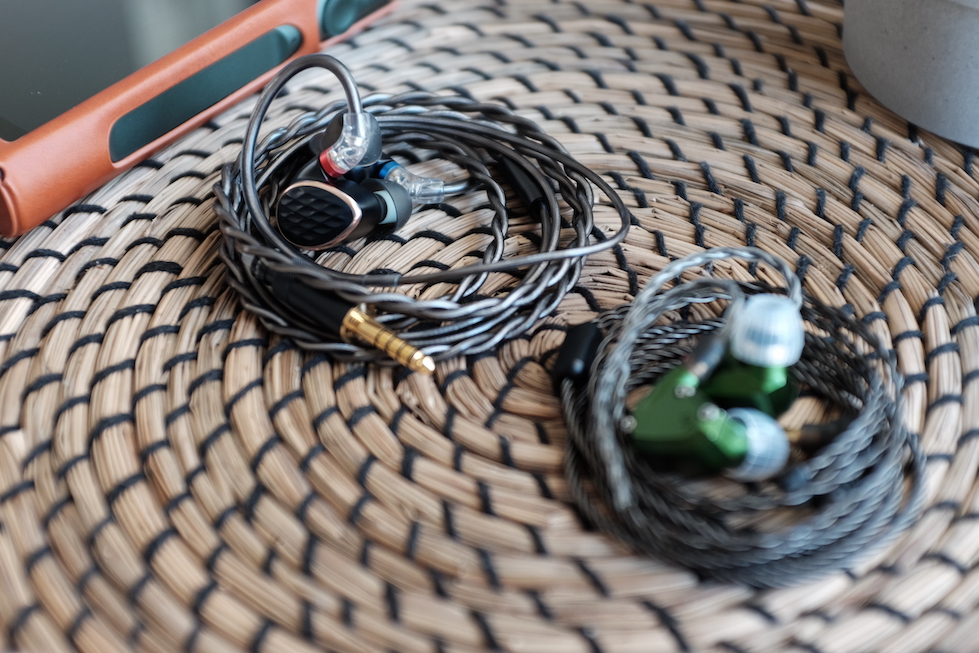
I did some A/B tests of the FH15 against Andromeda 2020 and the EA Gaea for fun. The mid-fi IEM managed to put up a decent fight against Andromeda but ultimately lost out in the crispness and nuance in the treble and the separation of instruments. And it should be noted that Andromeda is not an outstanding performer regarding resolution. Against the detail-focused Gaea, FH15 is not even in the same postcode.
Conclusion: 4/5 - Good.
Percussion Rendering: 4/5 - Good
Percussion and bass rendering reflect how well the tuning and technical performance of an IEM work together to recreate realistic sound of drum sets and bass instruments. Good drum hits have a crisp attack (controlled by frequencies from 4kHz to 6kHz), full body (midbass frequencies around 200Hz), and physical sensation (sub-bass frequencies around 50Hz). Good technical performance (“fast” driver) ensures that bass notes can be loud yet detailed. IEMs that cannot control bass very well tend to reduce the bass’ loudness to prevent muddiness.
A reader recently asked me whether the ancient Final Audio E5000 is still a competitive bass cannon in 2023. That’s when I realised a well-done dark, bassy, gigabass IEM is still a rare breed.
FH15 can change that.
As I alluded to above, FH15 has a very potent bass response. For instance, the war drums in Skyrim’s main theme Dragonborn produce noticeable pressure and rumble at every beat. The good part is you don’t lose much clarity and details to enjoy that bass. You don’t need a beefy source like you do with E5000.
Let’s listen to Eye of The Tiger and discuss how FH15 renders the rest of a rock band. Firstly, the separation between the kick drum and bass guitar is excellent. I can follow the bass line of the guitar easily whilst feeling the solid and deep punches of the kick. Snare drums feel tight and snappy. Drum rolls sound great. The low and mid-frequencies of the band are good.
However, I think the treble is a bit too subdued. For instance, cymbals and hi-hats are barely present in the mix. I can hear their faint ticking sound, but their nuances are lost. Is it a problem? It depends on how much you like (and tolerate) cymbals and hi-hats. If you listen to harsh music for hours, the subdued treble response may be a blessing.
Conclusion: 4/5 - Good.
Stereo Imaging (Soundstage): 5/5 - Excellent

Stereo imaging or “soundstage” is a psychoacoustic illusion that different recording elements appear at various locations inside and around your head. Your brain creates based on the cues in the recording, which are enhanced or diminished by your IEMs, DAC, and amplifier. Some IEMs present a wide but flat soundstage. Some show a “3D” soundstage with layering, depth, and height. In rare cases, with some specific songs, some IEMs can trick you into thinking that the sound comes from the environment (a.k.a., “holographic”)
If there is one bright spot in FH15’s performance, it’s the soundstage imaging.
Take the organised chaos G.O.A.T. by Polyphia as an example. FH15 projects a large soundstage that often seems just outside my ears and around my head. Within this stage, instruments are arranged in layers from closer to further away rather than a blob of a flat plane. This presentation immediately puts FH15 above the “good” level, represented by Blessing 2.
Does FH15 reach the elusive 5/5 soundstage imaging? Let’s take the Andromeda 2020 out for an A/B test and find out. I found that both IEMs are nearly identical regarding the 3D placement of instruments. Both present a strong, distinct centre image with complex guitar and drums right in the centre and the ambience thrown far to the background, both the sides and in front of me. This presentation is highlighted clearly around 1:04.
The Andromeda is noticeably crisper across the frequency range, especially the treble and the airy ambience in the background. As a result, it has the upper hand when separating and highlighting the details of the chaotic guitars in the centre of the image. But, even though the Andromeda is more detailed, I wouldn’t say it projects a larger or more 3D soundstage than FH15.
Conclusion: 5/5 - Excellent
Source Pairing
FH15 is not picky. I have great results with the built-in DAC/amp of the Nintendo Switch. The soundstage does open up a bit when I switch to my K7 DAC/amp or my Shanling M6U music player, but I don’t feel the need to use these better sources.
Conclusion
Despite my quibble about tonal balance and timbre, it is clear that FiiO successfully achieves a fun bassy sound signature with FH15. Suppose you have been yearning for a bass cannon with a slightly subdued midrange like E5000, but with better clarity and not as tricky to drive. In that case, the FiiO FH15 is a good candidate.
Pros:
- Large and deep soundstage with good layering
- Big and deep-hitting bass
- Fun tuning that works well with commercial music
- No harshness across high frequencies
- Good sense of macro-details and separation
Cons:
- Tonality tilts a bit too far in the warm and dark direction
- Timbre and tonality of acoustic instruments are not entirely correct
- Micro-detail retrieval is only average
